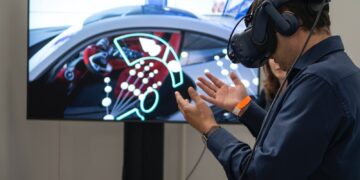In the world of architecture, progress hinges on innovation. From towering skyscrapers to eco-friendly dwellings, architects continuously seek new ways to push boundaries and redefine urban landscapes. In this digital age, Virtual Reality (VR) emerges as a transformative tool, revolutionizing how architects conceptualize, design, and construct the cities of tomorrow. Let’s delve into the profound impact of VR on architectural innovation and explore its diverse applications.
Virtual Reality in Architectural Visualization: Enhancing Design Concepts
The era of static blueprints and flat, two-dimensional renderings is a thing of the past. VR technology catapults architectural visualization into a realm of immersive experiences. Designers can now step inside their creations, exploring every nook and cranny with unparalleled realism. From the sleek lines of modernist marvels to the intricate details of historical landmarks, VR breathes life into architectural concepts, fostering creativity and collaboration. By enabling stakeholders to walk through virtual spaces before a single brick is laid, VR revolutionizes the design process, ensuring that every aspect is meticulously crafted to perfection.
VR in Urban Planning: Creating Sustainable and Livable Cities
As the world grapples with rapid urbanization, the need for sustainable and livable cities becomes increasingly paramount. VR emerges as a powerful ally in urban planning, offering planners and policymakers a dynamic platform to visualize, analyze, and optimize urban environments. Through VR simulations, city planners can test various scenarios, from transportation infrastructure to green spaces, allowing for informed decision-making and community engagement. By integrating VR into the urban planning process, cities can strive towards a more sustainable future, where quality of life and environmental stewardship are at the forefront of development initiatives.
VR in Construction: Streamlining Building Processes and Project Management
The construction industry, notorious for its complexities and challenges, stands to benefit immensely from VR technology. From project inception to completion, VR streamlines every facet of the construction process, enhancing efficiency and minimizing errors. Architects and contractors can use VR to visualize construction sequences, identify potential clashes, and optimize workflows, thereby reducing costs and timelines. Moreover, VR facilitates remote collaboration, allowing stakeholders from across the globe to virtually converge on-site, fostering synergy and communication. By harnessing the power of VR, the construction industry enters a new era of innovation, where projects are executed with precision and foresight.
Conclusion:
Virtual Reality is not merely a tool; it’s a catalyst for architectural innovation. By bridging the gap between imagination and reality, VR empowers architects to push boundaries, challenge conventions, and create spaces that inspire and delight. Whether revolutionizing visualization, reimagining urban landscapes, or streamlining construction processes, VR’s impact on architectural innovation is profound and far-reaching. As we design tomorrow’s cities, let us embrace the transformative potential of VR and shape a future where creativity knows no bounds.










































